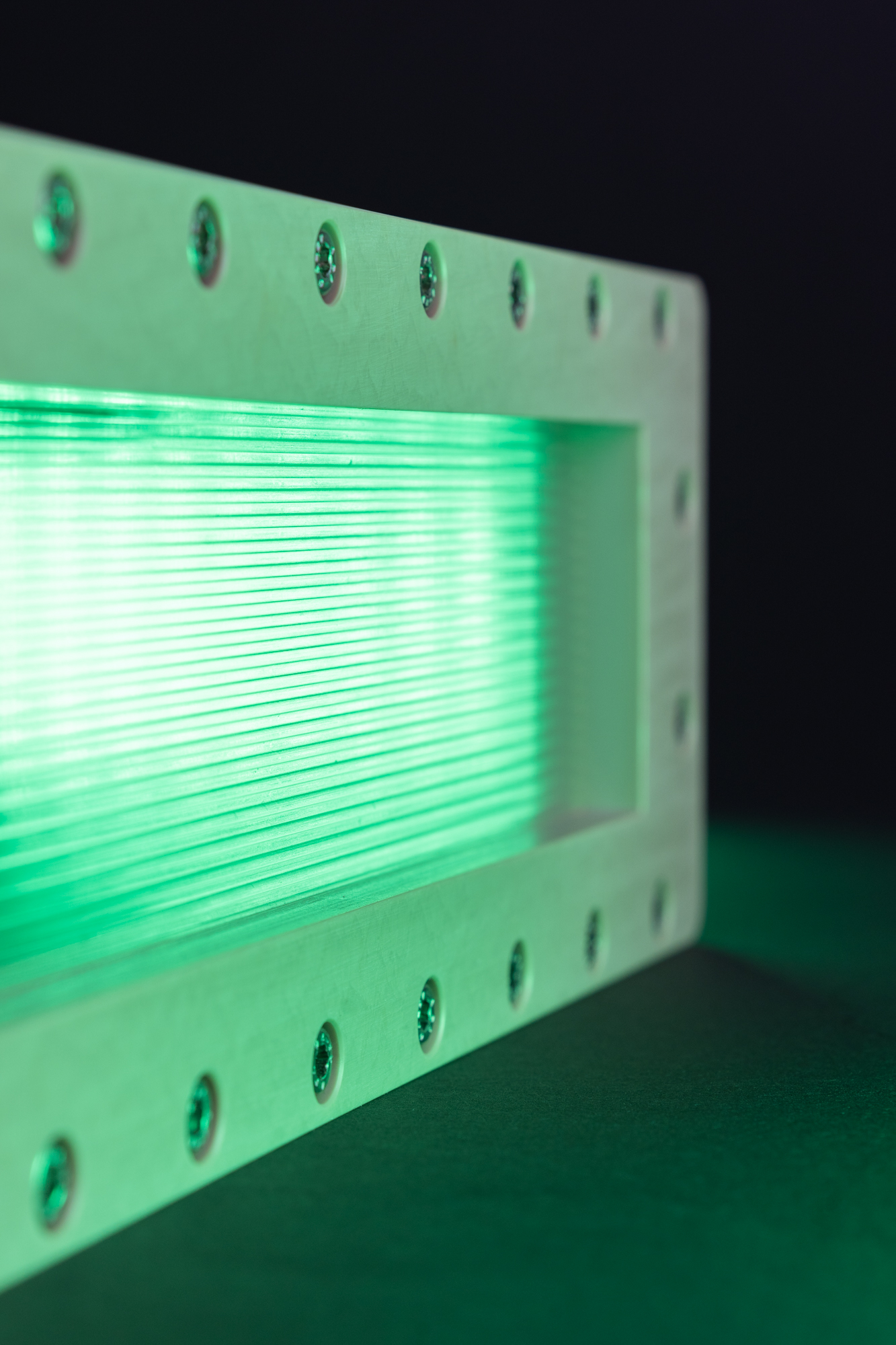Hybrid particles for cascade reactions
Within the interdisciplinary team, here at Fraunhofer ISC we have developed hybrid catalyst particles. These hybrid catalyst particles consist of photocatalytic building blocks and carrier particles, on which enzymes have been immobilized, presenting the biocatalytic building block. In the figure one example of a hybrid catalyst particle under a scanning electron microscope view is shown elucidating the principle of a photo-assisted biocatalysis cascade reaction: Photocatalytic building blocks have been intimately mixed via spray-drying technique with biocatalytic building blocks. The biocatalytic building block is carrying commercially available horse-radish peroxidase (HRP) on its surface. The hybrid catalyst particles are suspended in a water-based buffer solution and UV light is turned on. During this photocatalytic step, hydrogen peroxide is formed, which is then used in the biocatalytic step. A model reaction for the activity of horse radish peroxidase is the oxidation of tetramethylbenzidine, shortly TMB. This reaction is proceeding and can be monitored in a blue coloration of the reaction mixture.

One of the core competencies of the Fraunhofer ISC's particle technology group is the wet-chemical synthesis of tailor-made nano- and microparticles, their modification, characterization and synthesis upscaling to pilot scale. Next to silicon dioxide nanoparticles acting as excellent carrier particles for enzymes, research focuses on photocatalyst materials, e. g. titanium dioxide or carbon nitride particles.
With our spray-drying technique, the type and amount of building blocks can easily be varied and mixed to hybrid catalyst particles depending on the desired cascade reaction. The hybrid catalyst particles have already been used in flow-reactors of Fraunhofer IMM for the demonstration of industry-relevant, continuous cascade reactions. In flow reactors the hybrid catalyst particles have been heterogeneously distributed and can easily be separated after their use. Further on by using our selective spray-coating technique at Fraunhofer ISC, hybrid catalyst particles have been immobilized directly into microchannels of metal or polymer substrates, which can easily be replaced after their use in a flow reactor. During the cooperation, Fraunhofer IME provided custom-synthesized enzymes for the industry-relevant biocatalytic step. Thus, a modular system for the realization of cascade reactions in flow mode is waiting for you.
In which cascade reaction are you interested? Fraunhofer ISC´s particle technology group will support you in finding and synthesizing suitable particle-based materials or upscaling your particle synthesis or particles´ modification.



